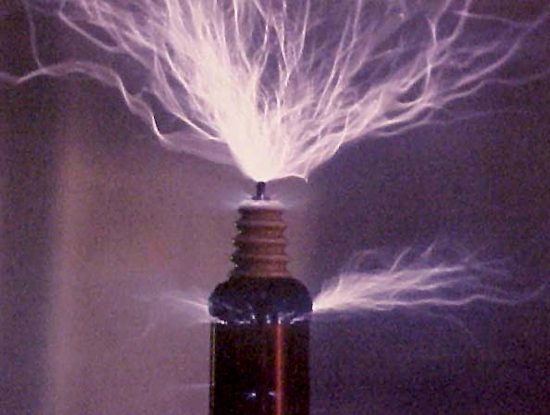
June 1, 2020
Electricity lights the stars and energizes a web of galaxy clusters. But what is it?
“Electricity” is a catchall term, describing several phenomena: piezoelectric, thermoelectric, and even bioelectric activity are all forms of electricity—just like “heat” has many faces: radiant heat, contact heat, convective heat, etc. However, heat is a form of energy while electricity is not. Keeping in mind that molten lava is not a flow of heat, nor is an electric current a river of electricity.
Defining electricity depends on who provides the definition. Physicists and mathematicians define it one way, while “citizen scientists” define it another way. Since electricity is a fundamental quality of matter, the consensus opinion is often imprecise.
Like all bedrock presumptions such as “gravity” or “time”, electric terminology is limited because it lies at the bottom of the lexical well. All we can do is draw water from the well, but we can’t make more water. Electrical phenomena must be compared with other observations. There is nowhere further than that.
Ideas such as “length” are also limited without comparisons. No matter how small or how large an object is, length remains a principle that underlies all units, whether meters, or light-years. The question, “how many lengths of string does it take to reach the Moon?” is meaningless because units of measurement must be considered. It depends on a numerical value before the question can have meaning.
Scientists use “electricity” when they mean “the flow of electric charge”. Maxwell and other early investigators thought of it in that way, and that is how it is used today when electric current is discussed. As mentioned, when the expression is used among other groups of people, it is often confusing. For example, consider this definition from a website designed for high school students:
“[Electricity] is a form of energy, evident from the fact that it runs machinery and can be transformed into other types of energy such as light and heat.”
There is “electrical energy”, but it is not the same as electric charge. Electrical energy (otherwise called, “electromagnetism”) is measured in “joules”, while electric charge is measured in “coulombs”. Electricity, which we define as the flow of electric charge, travels through a circuit continuously when there is sufficient voltage to push it along through the wiring. It moves slowly.
Electromagnetic energy is different; it flows in only one direction at near the speed of light. Whereas electric charge is conserved in the circuit—it cannot be created or destroyed, only moved from place-to-place—electrical energy is converted into other forms. It travels from the source to the load, and then away from the circuit as light or heat, never to return.
In a direct current (DC) circuit, electric charge hardly moves at all. In fact, electricity in DC circuits has been measured at speeds of only meters per hour. The electromagnetic energy in a circuit, on the other hand, travels like a wave through water, moving at speeds of millions of meters per second. Just as waves travel “through” water molecules in the ocean, electromagnetic energy travels “through” electric charge.
Electric current is measured in coulombs per second (amperes) while electromagnetic energy is measured in joules. There is no way to convert one to another, they are unrelated. Electric current is matter (charged particles) and electromagnetism is energy.
Electricity moves through a DC circuit in the wires as particles of charge. Electrical energy travels outside the wires as units of electromagnetism: it is a “field” rather than packets of material charge. In alternating current (AC) circuits, the movement of electricity is different, but the distinction between matter and energy remains. In AC circuits the electric charge does not flow. Instead, charged particles in the wires oscillate back and forth at 60 times per second in America, or 50 times per second in Europe. The energy flow is identical. However, it travels along outside of the wires at close to light speed.
So electric charge is not electrical energy. Electrons are not carriers of electrical energy. Electric charge flow and electromagnetic induction are different.
Stephen Smith
The Thunderbolts Picture of the Day is generously supported by the Mainwaring Archive Foundation.












